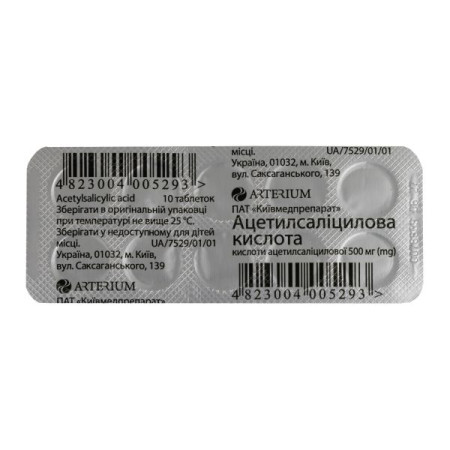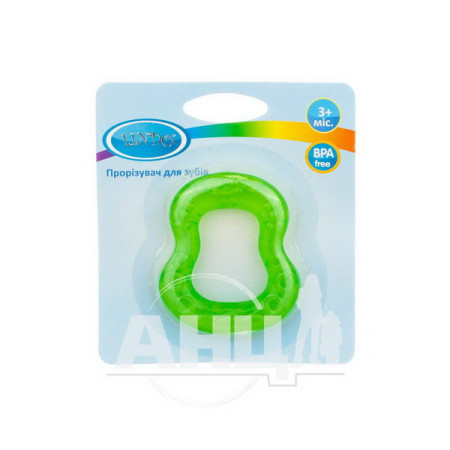Zonik capsules 25 mg No. 28

Instructions for Zonik capsules 25 mg No. 28
Composition
active ingredient: pregabalin;
1 hard capsule contains 25 mg or 50 mg of pregabalin;
excipients: pregelatinized starch, magnesium stearate, hard gelatin capsule (gelatin, purified water, titanium dioxide (E 171), sodium lauryl sulfate).
Dosage form
The capsules are hard.
Main physicochemical properties:
25 mg hard capsules: hard gelatin capsules size No. 4 with a white body and cap, containing white to almost white powder;
50 mg hard capsules: size No. 4 hard gelatin capsules with a white body and cap, containing white to almost white powder.
Pharmacotherapeutic group
Antiepileptics. Other antiepileptics. Pregabalin. ATX code N03A X16.
Pharmacological properties
Pharmacodynamics.
The active substance is pregabalin, an analogue of gamma-aminobutyric acid.
[(S)-3-(aminomethyl)-5-methylhexanoic acid].
Mechanism of action.
Pregabalin binds to the auxiliary subunit (a2–d protein) of voltage-gated calcium channels in the central nervous system (CNS).
Clinical efficacy and safety.
Neuropathic pain.
Pregabalin is effective in patients with diabetic neuropathy, postherpetic neuralgia, and spinal cord injuries. Its efficacy in other types of neuropathic pain has not been studied.
The safety and efficacy profiles of pregabalin treatment for up to 13 weeks with a twice-daily dosing regimen and up to 8 weeks with a three-times-daily dosing regimen have been found to be similar.
When pregabalin was used to treat neuropathic pain for up to 12 weeks, a reduction in peripheral and central pain was observed after the first week and was maintained throughout the treatment period.
Epilepsy.
Adjunctive therapy: The safety and efficacy profiles of pregabalin were similar after 12 weeks of twice- or three-times-daily dosing. A reduction in seizure frequency was observed as early as the first week.
Children: The efficacy and safety of pregabalin as an adjunctive therapy in epilepsy in children under 12 years of age and adolescents have not been established. Adverse reactions observed in patients aged 3 months to 16 years with partial onset seizures were similar to those observed in adults. Pyrexia and upper respiratory tract infections were observed more frequently in children aged 3 months to 16 years than in adult patients with epilepsy (see sections 4.2, 4.8 and 4.8).
Monotherapy (in patients with newly diagnosed disease): Pregabalin and lamotrigine were equally safe and well tolerated.
Generalized anxiety disorder.
A reduction in symptoms of generalized anxiety disorder according to the Hamilton Anxiety Rating Scale (HAM-A) was observed as early as the first week of pregabalin use.
Fibromyalgia.
Studies have shown a reduction in pain on a visual analogue scale. Improvements were additionally demonstrated on the patient's global assessment and on a fibromyalgia impact survey.
Children: The most common adverse reactions observed in clinical trials were dizziness, nausea, headache, weight gain, and fatigue. The overall safety profile in adolescents was similar to that in adults with fibromyalgia.
Pharmacokinetics.
The steady-state pharmacokinetics of pregabalin were similar in healthy volunteers, patients with epilepsy taking antiepileptic drugs, and patients with chronic pain.
Absorption.
Pregabalin is rapidly absorbed in the fasted state and reaches peak plasma concentrations within 1 hour after single or multiple doses. The estimated oral bioavailability of pregabalin is ≥ 90% and is independent of dose. Steady state is reached within 24-48 hours after multiple doses. The rate of absorption of pregabalin is reduced when taken with food, resulting in a decrease in maximum concentration (Cmax) by approximately 25-30% and a prolongation of tmax to approximately 2.5 hours. However, taking pregabalin with food had no clinically significant effect on the extent of its absorption.
Distribution.
Pregabalin crosses the blood-brain barrier in mice, rats and monkeys. Pregabalin has been shown to cross the placenta in rats and is excreted in the milk of lactating rats. In humans, the volume of distribution of pregabalin after oral administration is approximately 0.56 L/kg. Pregabalin is not bound to plasma proteins.
Metabolism.
Pregabalin undergoes minimal metabolism in humans. Following a dose of radiolabeled pregabalin, approximately 98% of the radioactivity was excreted in the urine as unchanged pregabalin. The N-methylated derivative of pregabalin, the major metabolite of the drug detected in urine, accounted for 0.9% of the administered dose. In preclinical studies, there was no racemization of the S-enantiomer of pregabalin to the R-enantiomer.
Pregabalin is eliminated from the systemic circulation unchanged, primarily by the kidneys. The mean elimination half-life of pregabalin is 6.3 hours. The plasma and renal clearance of pregabalin are directly proportional to creatinine clearance (see section 5.2). Renal impairment.
Patients with impaired renal function or patients on hemodialysis require dose adjustment (see section "Method of administration and dosage", Table 1).
Linearity/nonlinearity.
The pharmacokinetics of pregabalin are linear over the recommended dose range. The inter-patient variability in the pharmacokinetics of pregabalin is low (< 20%). The pharmacokinetics of multiple doses are predictable from single-dose data. Therefore, routine monitoring of pregabalin plasma concentrations is not required.
Sex.
Results of clinical studies indicate that there is no clinically significant effect of gender on pregabalin plasma concentrations.
Kidney failure.
Pregabalin clearance is directly proportional to creatinine clearance. In addition, pregabalin is effectively removed from plasma by hemodialysis (after 4 hours of hemodialysis, the concentration of pregabalin in the blood plasma decreases by approximately 50%). Since the drug is excreted mainly by the kidneys, patients with renal insufficiency should reduce the dose of the drug, and after hemodialysis - use an additional dose (see section "Method of administration and dosage", Table 1).
Liver failure.
Specific pharmacokinetic studies have not been conducted in patients with hepatic impairment. Since pregabalin is not extensively metabolized and is excreted primarily unchanged in the urine, hepatic impairment is unlikely to have a significant effect on pregabalin plasma concentrations.
Children.
The pharmacokinetics of pregabalin have been studied in children with epilepsy. After oral administration of pregabalin to children in the fasted state, the time to reach maximum plasma concentrations ranged from 0.5 to 2 hours after administration.
Pregabalin Cmax and area under the concentration-time curve (AUC) increased linearly with increasing dose. In children weighing <30 kg, AUC values were 30% lower, due to a 43% increase in weight-adjusted clearance in these patients compared to patients weighing ≥30 kg.
The terminal half-life of pregabalin averaged approximately 3-4 hours in children under 6 years of age and 4-6 hours in children over 7 years of age.
Creatinine clearance was found to be a significant covariate for oral pregabalin clearance, and body weight was a significant covariate for the apparent volume of distribution of oral pregabalin, and this relationship was similar in pediatric and adult patients.
The pharmacokinetics of pregabalin in patients younger than 3 months of age have not been studied (see sections “Children”, “Adverse reactions” and “Pharmacodynamics”).
Elderly patients.
Pregabalin clearance tends to decrease with age. This decrease in oral pregabalin clearance is consistent with the age-related decrease in creatinine clearance. Patients with age-related renal impairment may require a reduction in the dose of pregabalin (see Dosage and Administration, Table 1).
Breast-feeding.
Breastfeeding had no or negligible effect on the pharmacokinetics of pregabalin when administered at a dose of 150 mg every 12 hours (daily dose of 300 mg). Pregabalin is excreted in human milk, with mean steady-state concentrations approximately 76% of maternal plasma concentrations. The estimated dose to the breastfed infant (with a mean milk intake of 150 ml/kg/day) from a woman taking pregabalin at a dose of 300 mg/day or a maximum dose of 600 mg/day is 0.31 or 0.62 mg/kg/day, respectively. These estimated doses represent approximately 7% of the total maternal daily dose on a mg/kg basis.
Indication
Neuropathic pain.
Zonik is indicated for the treatment of neuropathic pain of peripheral or central origin in adults.
Epilepsy.
Zonik is indicated in adults as an adjunctive treatment for partial seizures with or without secondary generalization.
Generalized anxiety disorder.
Zonik is indicated for the treatment of generalized anxiety disorder in adults.
Fibromyalgia.
Contraindication
Hypersensitivity to the active substance or to any of the excipients listed in the "Composition" section.
Interaction with other medicinal products and other types of interactions
Since pregabalin is excreted primarily unchanged in the urine, undergoes minimal metabolism in humans (≤ 2% of the dose is excreted in the urine as metabolites), does not inhibit the metabolism of other drugs in vitro, and is not bound to plasma proteins, it is unlikely that pregabalin could cause or be the target of pharmacokinetic interactions.
In vivo studies have not shown any clinically significant pharmacokinetic interactions between pregabalin and phenytoin, carbamazepine, valproic acid, lamotrigine, gabapentin, lorazepam, oxycodone or ethanol. Population pharmacokinetic analysis has shown that oral antidiabetics, diuretics, insulin, phenobarbital, tiagabine and topiramate have no clinically significant effect on the clearance of pregabalin.
Oral contraceptives, norethisterone and/or ethinyl estradiol.
Co-administration of pregabalin with oral contraceptives, norethisterone and/or ethinyl estradiol does not affect the steady-state pharmacokinetics of either drug.
Drugs that affect the CNS.
Pregabalin may potentiate the effects of ethanol and lorazepam. Respiratory failure and coma, and fatal outcomes, have been reported in patients taking pregabalin with opioids and/or other CNS depressants. Pregabalin is likely to potentiate the cognitive and gross motor impairments caused by oxycodone.
Interactions in elderly patients.
No specific pharmacodynamic interaction studies have been conducted in elderly volunteers. Drug interaction studies have only been conducted in adult patients.
Application features
Patients with diabetes.
In accordance with current clinical practice, some patients with diabetes mellitus who gain weight during pregabalin therapy may require dose adjustment of their antidiabetic medicinal products.
Hypersensitivity reactions.
Hypersensitivity reactions, including angioedema, have been reported. If symptoms of angioedema such as facial edema, perioral edema, or upper airway edema occur, pregabalin should be discontinued immediately.
Severe skin adverse reactions
Severe cutaneous adverse reactions, including Stevens-Johnson syndrome (SJS) and toxic epidermal necrolysis (TEN), which can be life-threatening or fatal, have been reported rarely in association with pregabalin treatment. When prescribing Zonic, patients should be informed of the signs and symptoms and monitored closely for skin reactions. If signs and symptoms suggestive of these reactions occur, pregabalin should be discontinued immediately and alternative treatment should be considered (if appropriate).
Dizziness, drowsiness, loss of consciousness, confusion and mental disorders.
Pregabalin has been associated with dizziness and somnolence, which may increase the risk of falls in elderly patients. Loss of consciousness, confusion, and mental status changes have also been reported. Therefore, patients should be advised to exercise caution until they are aware of the potential effects of this medicinal product.
Vision disorders.
In controlled trials, blurred vision was more frequently observed in patients treated with pregabalin than in patients treated with placebo. In most cases, this phenomenon resolved with continued therapy. In clinical trials in which ophthalmological examinations were performed, the incidence of visual acuity deterioration and visual field changes was higher in patients treated with pregabalin compared to patients in the placebo group; the incidence of fundus changes was higher in patients in the placebo group (see section "Pharmacodynamics").
Ocular adverse reactions, including vision loss, blurred vision, or other changes in visual acuity, many of which were transient, have also been reported. These visual symptoms may resolve or improve after discontinuation of pregabalin.
Kidney failure.
Cases of renal failure have been reported, which were sometimes reversible after discontinuation of pregabalin.
Withdrawal of concomitant antiepileptic drugs.
There is currently insufficient data on whether concomitant antiepileptic drugs can be withdrawn once seizure control is achieved with the addition of pregabalin to therapy, in order to switch to pregabalin monotherapy.
Congestive heart failure.
Congestive heart failure has been reported in some patients taking pregabalin. This reaction has been observed primarily during the treatment of neuropathic pain with pregabalin in elderly patients with pre-existing cardiovascular disorders. Pregabalin should be used with caution in such patients. This phenomenon may resolve upon discontinuation of pregabalin.
Treatment of neuropathic pain of central origin due to spinal cord injury.
During the treatment of central neuropathic pain caused by spinal cord injury, the frequency of adverse reactions in general, as well as adverse reactions from the central nervous system and in particular drowsiness, was increased. This may be due to the additive effect of concomitant medicinal products (e.g. antispasticity agents) required for the treatment of this condition. This should be taken into account when prescribing pregabalin for this condition.
Severe respiratory depression has been reported with pregabalin. Patients with compromised respiratory function, respiratory or neurological disease, renal impairment, concomitant use of CNS depressants, and the elderly may be at greater risk of this serious adverse reaction. Dose adjustment may be necessary for these patients (see Dosage and Administration).
Suicidal risk
Suicidal ideation/behavior/actions have been reported in patients treated with antiepileptic drugs (including pregabalin) in some indications (see section 4.8). A small increased risk of suicide has also been observed in a meta-analysis of randomised placebo-controlled trials of antiepileptic drugs. The mechanism of this risk is unknown. Suicidal ideation/behavior has been reported in patients treated with pregabalin in the post-marketing setting (see section 4.8). An epidemiological study using a self-controlled study design (comparing treatment periods with periods without treatment within an individual) has shown an increased risk of new suicidal ideation and death by suicide in patients taking pregabalin.
Therefore, patients should be closely monitored for signs of suicidal ideation/behavior/action and appropriate treatment should be considered. Patients (and caregivers of patients) should seek medical advice if such signs develop. Discontinuation of pregabalin should be considered if suicidal ideation/behavior develops.
Deterioration of the function of the lower gastrointestinal tract.
Post-marketing reports of events associated with lower gastrointestinal dysfunction (such as intestinal obstruction, paralytic ileus, constipation) have been reported when pregabalin was used with medicinal products that may cause constipation, such as opioid analgesics. Precautions should be taken to prevent constipation when pregabalin is used concomitantly with opioids (especially in women and the elderly).
Concomitant use with opioids
Caution is advised when prescribing pregabalin concomitantly with opioids due to the risk of CNS depression (see Interactions with other medicinal products and other forms of interaction). A retrospective study demonstrated that patients taking pregabalin concomitantly with opioids had an increased risk of opioid-related mortality compared with opioids alone (adjusted odds ratio [aOR], 1.68 [95% CI, 1.19–2.36]). This increased risk was seen with low doses of pregabalin (≤ 300 mg, aOR 1.52 [95% CI, 1.04–2.22]), and there was a trend toward a higher risk with high doses of pregabalin (> 300 mg, aOR 2.51 [95% CI 1.24–5.06]).
Misuse, abuse or addiction.
Pregabalin can cause drug dependence, which can occur at therapeutic doses. Cases of abuse and misuse have been reported. Patients with a history of substance abuse may be at higher risk of misuse, abuse, and dependence when using pregabalin and should be used with caution in these patients. The risk of misuse, abuse, or dependence should be carefully evaluated before prescribing pregabalin.
Patients receiving pregabalin treatment should be monitored for signs of misuse, abuse or dependence, such as development of tolerance, dose escalation and drug-seeking behaviour.
Withdrawal symptoms.
Withdrawal symptoms have been observed after discontinuation of short-term or long-term pregabalin therapy. The following symptoms have been reported: insomnia, headache, nausea, anxiety, diarrhea, flu-like syndrome, nervousness, depression, suicidal ideation, pain, seizures, hyperhidrosis, and dizziness. The occurrence of withdrawal symptoms after discontinuation of pregabalin may indicate drug dependence (see section 4.8). This information should be communicated to the patient before starting treatment. If pregabalin needs to be discontinued, it is recommended that this be done gradually over at least 1 week, regardless of the indication (see section 4.8).
Convulsions, including status epilepticus and grand mal seizures, may occur during pregabalin therapy or shortly after its discontinuation.
Data on pregabalin withdrawal after long-term use indicate that the incidence and severity of withdrawal symptoms may be dose-dependent.
Encephalopathy.
Cases of encephalopathy have been reported, occurring predominantly in patients with underlying conditions that may predispose to encephalopathy.
Pregabalin use during the first trimester of pregnancy may cause serious birth defects (BDD) in the unborn child. Zonic should not be used during pregnancy unless the benefit to the mother clearly outweighs the potential risk to the fetus. Women of childbearing potential should use effective contraception during treatment with pregabalin (see section "Use during pregnancy or breastfeeding").
Excipients
This medicinal product contains less than 1 mmol sodium per dose, i.e. essentially 'sodium-free'.
Use during pregnancy or breastfeeding
Women of reproductive age/contraception.
Women of reproductive age should use effective contraception.
Pregnancy.
Reproductive toxicity has been demonstrated in animal studies. Pregabalin has been shown to cross the placenta in rats. Pregabalin may cross the placenta in humans.
Serious birth defects (SBD)
Data from a Scandinavian observational study of more than 2,700 pregnant women exposed to pregabalin in the first trimester showed a higher prevalence of serious VVR among children (live or stillborn) exposed to pregabalin in utero compared with a population of children not exposed (5.9% vs. 4.1%).
The risk of developing serious VVD among children exposed to pregabalin in utero in the first trimester of pregnancy was slightly higher compared with the population of children not exposed (adjusted prevalence ratio and 95% confidence interval: 1.14 (0.96-1.35)), and compared with the population exposed to lamotrigine (1.29 (1.01-1.65)) or duloxetine (1.39 (1.07-1.82)).
Analysis of the specificity of VVR demonstrated a higher risk for orofascial nonunions and defects of the eye, nervous system, or genitourinary system, but the rates were small and the estimates imprecise.
Zonik should not be used during pregnancy unless clearly necessary (when the benefit to the mother clearly outweighs the potential risk to the fetus).
Breast-feeding.
Pregabalin is excreted in human milk. The effects of pregabalin on newborns/infants are unknown. A decision must be made whether to discontinue breast-feeding or to discontinue pregabalin therapy, taking into account the benefit of breast-feeding for the child and the benefit of therapy for the woman.
Fertility.
There are no clinical data on the effect of pregabalin on female fertility.
In a clinical study of the effects of pregabalin on sperm motility, healthy male volunteers were treated with pregabalin at a dose of 600 mg/day. No effect on sperm motility was observed after 3 months of treatment.
In a fertility study in female rats, adverse effects on reproductive function were observed. In a fertility study in male rats, adverse effects on reproductive function and development were observed. The clinical relevance of these findings is unknown.
Ability to influence reaction speed when driving vehicles or other mechanisms
Pregabalin may have minor or moderate influence on the ability to drive and use machines. Pregabalin may cause dizziness and drowsiness, and thus may affect the ability to drive and use machines. Therefore, patients should be advised to refrain from driving, operating complex machinery, and other potentially hazardous activities until it is known whether this medicinal product affects their ability to perform such activities.
Method of administration and doses
Method of application.
The drug Zonik should be taken regardless of meals.
This medicine is intended for oral use only.
Doses.
The dose range of the drug can vary within 150–600 mg per day. The daily dose should be divided into 2 or 3 doses.
Neuropathic pain.
Pregabalin therapy can be initiated at a dose of 150 mg/day, divided into 2 or 3 doses. Depending on individual response and tolerability, the dose can be increased to 300 mg/day after 3-7 days, and if necessary, to a maximum dose of 600 mg/day after another 7 days.
Epilepsy.
Pregabalin therapy can be initiated at a dose of 150 mg per day, divided into 2 or 3 doses. Depending on the individual response and tolerability of the drug by the patient, the dose can be increased to 300 mg per day after the first week of treatment. After another week, the dose can be increased to a maximum of 600 mg per day.
Generalized anxiety disorder.
The dose, divided into 2 or 3 doses, may vary between 150 and 600 mg per day. The need for continued therapy should be reviewed periodically.
Pregabalin therapy can be initiated at a dose of 150 mg per day. Depending on the individual response and tolerability of the drug by the patient, the dose can be increased to 300 mg per day after the first week of treatment. After another week of treatment, the dose can be increased to 450 mg per day. After another week, the dose can be increased to a maximum of 600 mg per day.
The recommended dose for the treatment of fibromyalgia is 300–450 mg per day. Treatment should be initiated at 75 mg twice daily (150 mg per day). Depending on efficacy and tolerability, the dose may be increased to 150 mg twice daily (300 mg per day) within one week. For patients who are not adequately responsive to 300 mg per day, the dose may be increased to 225 mg twice daily (450 mg per day). Although a 600 mg per day dose has been studied, there is no evidence that this dose provides additional benefit; it was also less well tolerated. Given the dose-related adverse reactions, doses above 450 mg per day are not recommended. Since the drug is primarily excreted by the kidneys, the dose should be adjusted in patients with impaired renal function.
Pregabalin withdrawal.
In accordance with current clinical practice, it is recommended to discontinue pregabalin therapy gradually, over a period of at least one week, regardless of the indication (see sections “Special warnings and precautions for use” and “Adverse reactions”).
Kidney dysfunction.
Pregabalin is eliminated from the systemic circulation unchanged, primarily by the kidneys. Since pregabalin clearance is directly proportional to creatinine clearance (see section 5.2), the dose should be reduced in patients with renal impairment as indicated in Table 1, according to creatinine clearance (CLcr), which should be determined using the formula:
Pregabalin is effectively removed from plasma by haemodialysis (50% of the drug within 4 hours). For patients on haemodialysis, the daily dose of pregabalin should be adjusted according to renal function. In addition to the daily dose, an additional dose of the drug should be administered immediately after each 4-hour haemodialysis session (see Table 1).
| Pregabalin dose adjustment according to renal function. | Table 1. |
| Creatinine clearance (CLcr) (mL/min) | Total daily dose of pregabalin * | Dosage regimen | |
| Starting dose (mg/day) | Maximum dose (mg/day) | ||
| ≥ 60 | 150 | 600 | Twice or three times a day |
| ≥ 30 – < 60 | 75 | 300 | Twice or three times a day |
| ≥ 15 – < 30 | 25–50 | 150 | Once or twice a day |
| < 15 | 25 | 75 | Once a day |
| Additional dose after hemodialysis (mg) | |||
| 25 | 100 | Single dose+ | |
* The total daily dose (mg/day) should be divided into several doses according to the dosing regimen to obtain a single dose (mg/dose).
+ An additional dose is an additional single dose.
Liver dysfunction.
No dose adjustment is necessary for patients with impaired liver function (see section "Pharmacokinetics").
Elderly patients.
Elderly patients may require a reduction in the dose of pregabalin due to decreased renal function (see section 5.2).
Children.
The safety and efficacy of pregabalin in children (under 18 years of age) have not been established. Currently available information is provided in the section "Adverse reactions", as well as in the sections "Pharmacodynamics" and "Pharmacokinetics", however, based on this information, no dosage recommendations can be made for this category of patients.
Overdose
The most common adverse reactions reported with pregabalin overdose were drowsiness, confusion, agitation, and restlessness. Convulsions have also been reported.
Rare cases of coma have been reported.
Treatment of pregabalin overdose consists of general supportive measures and may include hemodialysis if necessary (see section “Method of administration and dosage”, table).
Side effects
In studies, the most common adverse reactions were dizziness and drowsiness. Adverse reactions were usually mild or moderate.
All adverse reactions that occurred more frequently than placebo and in more than one patient are listed below. These adverse reactions are listed by system organ class and frequency: very common (≥ 1/10); common (≥ 1/100 to < 1/10); uncommon (≥ 1/1,000 to < 1/100); rare (≥ 1/10,000 to < 1/1,000); very rare (< 1/10,000); not known (cannot be estimated from the available data). Within each frequency grouping, adverse reactions are presented in order of decreasing seriousness.
These adverse reactions may also be associated with the course of the underlying disease and/or concomitant use of other medications.
During the treatment of neuropathic pain of central origin caused by spinal cord injury, the frequency of adverse reactions in general and the frequency of adverse reactions from the CNS, especially drowsiness, increased (see section "Special instructions").
Infections and invasions.
Common: nasopharyngitis.
From the blood and lymphatic system.
Uncommon: neutropenia.
From the immune system.
Uncommon: hypersensitivity.
Rare: angioedema, allergic reactions, anaphylactoid reactions.
From the side of metabolism.
Common: increased appetite.
Uncommon: loss of appetite, hypoglycaemia.
From the psychological side.
Uncommon: hallucinations, panic attacks, anxiety, agitation, depression, depressed mood, elevated mood, aggression, mood swings, depersonalization, difficulty finding words, abnormal dreams, increased libido, anorgasmia, apathy.
Rare: disinhibition, suicidal thoughts/behavior (see section "Special warnings and precautions for use").
Not known: drug dependence.
From the nervous system.
Very common: dizziness, drowsiness, headache.
Common: ataxia, coordination disorder, tremor, dysarthria, amnesia, memory impairment, disturbance in attention, paraesthesia, hypoaesthesia, sedation, balance disorder, lethargy.
Uncommon: syncope, stupor, myoclonus, loss of consciousness, psychomotor hyperactivity, dyskinesia, dizziness postural, intention tremor, nystagmus, cognitive impairment, mental impairment, speech disorder, hyporeflexia, hyperaesthesia, burning sensation, ageusia, malaise, apathy, paraoral paresthesia, myoclonus.
Rare: convulsions, parosmia, hypokinesia, dysphagia, parkinsonism, hypalgesia, dependence, cerebellar syndrome, cogwheel syndrome, coma, delirium, encephalopathy, extrapyramidal syndrome, Guillain-Barré syndrome, intracranial hypertension, manic reactions, paranoid reactions, sleep disorders.
From the organs of vision.
Common: blurred vision, diplopia, conjunctivitis.
Uncommon: loss of peripheral vision, visual impairment, eye swelling, visual field defects, decreased visual acuity, eye pain, asthenopia, photopsia, dry eyes, lacrimation increased, eye irritation, blepharitis, accommodation disorder, ocular hemorrhage, photophobia, retinal edema.
Rare: vision loss, keratitis, oscillopsia, altered visual depth perception, mydriasis, strabismus, visual brightness, anisocoria, corneal ulcers, exophthalmos, ocular muscle paralysis, iritis, keratoconjunctivitis, miosis, night blindness, ophthalmoplegia, optic nerve atrophy, optic disc edema, ptosis, uveitis.
On the part of the organs of hearing and balance.
Common: vertigo.
Uncommon: hyperacusis.
From the heart.
Uncommon: tachycardia, first degree atrioventricular block, sinus bradycardia, congestive heart failure.
Rare: QT prolongation, sinus tachycardia, sinus arrhythmia.
From the side of the vessels.
Uncommon: hypotension, hypertension, hot flushes, flushing, feeling of coldness in the extremities.
On the part of the respiratory system, chest organs and mediastinum.
Common: pharyngolaryngeal pain.
Uncommon: dyspnoea, epistaxis, cough, nasal congestion, rhinitis, snoring, dry nasal mucosa.
Rare: pulmonary edema, throat tightness, laryngospasm, apnea, atelectasis, bronchiolitis, hiccups, pulmonary fibrosis, yawning.
Not known: respiratory depression.
From the gastrointestinal tract.
Common: vomiting, nausea, constipation, diarrhea, flatulence, bloating, dry mouth, gastroenteritis.
Uncommon: gastroesophageal reflux disease, salivary hypersecretion, oral hypoaesthesia, cholecystitis, cholelithiasis, colitis, gastrointestinal haemorrhage, melena, tongue oedema, rectal haemorrhage.
Rare: ascites, pancreatitis, tongue swelling, dysphagia, aphthous stomatitis, esophageal ulcer, periodontal abscess.
On the part of the hepatobiliary system.
Uncommon: increased liver enzymes*.
Rare: jaundice.
Very rare: hepatic failure, hepatitis.
On the skin and subcutaneous tissue.
Common: pressure ulcers.
Uncommon: papular rash, urticaria, hyperhidrosis, pruritus, alopecia, dry skin, eczema, hirsutism, skin ulceration, vesiculobullous rash.
Rare: Stevens-Johnson syndrome, toxic epidermal necrolysis, cold sweat, exfoliative dermatitis, lichenoid dermatitis, melanosis, nail disorders, petechial rash, purpura, pustular rash, skin atrophy, skin necrosis, cutaneous and subcutaneous nodules.
From the side
There are no reviews for this product.
There are no reviews for this product, be the first to leave your review.
No questions about this product, be the first and ask your question.













